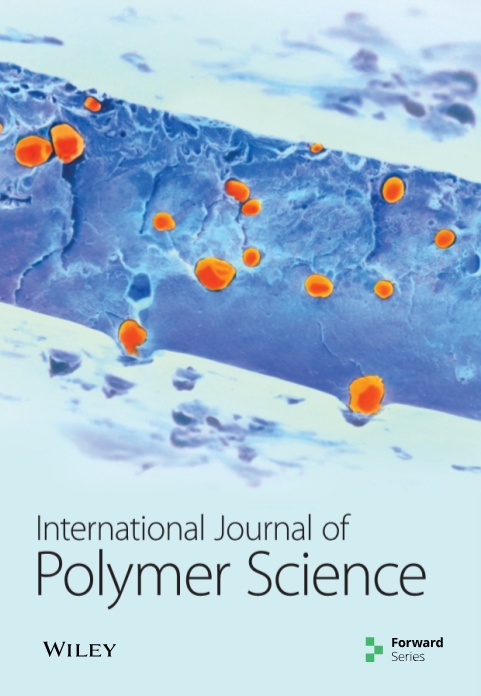甲硝唑控释ph响应壳聚糖/聚乙烯吡咯烷酮水凝胶的制备及抗菌性能研究
IF 4.4
4区 化学
Q2 POLYMER SCIENCE
引用次数: 3
摘要
本研究的重点是制备具有药物控释特性的水凝胶来控制胃肠道细菌感染。以壳聚糖(CS)和聚乙烯吡咯烷酮(PVP)为基础聚合物,经戊二醛交联制备水凝胶。在pH为1.2、6.8和7.4的模拟生理液体中,不同戊二醛含量对水凝胶的影响表现为肿胀程度;孔隙度的发育;凝胶分数。通过傅里叶变换红外光谱、热重分析、x射线衍射和扫描电镜对形成的官能团、共价键和氢键、热稳定性、相结构和形貌进行了表征。结果表明,水凝胶中各组分具有良好的相容性,形成蜂窝状结构。体外实验证实该水凝胶在pH 7.4下具有良好的生物降解性。在此基础上,选择以600 μL戊二醛为交联剂,以60∶40的比例制备CS/PVP水凝胶,原位负载200 mg药物甲硝唑(MTZ)。利用不同的模型对水凝胶在模拟生理液体中的药物累积释放和药物释放动力学进行了表征,并对其抗菌活性进行了研究。最拟合的Korsmeyer-Peppas模型表明,MTZ释放遵循与水凝胶侵蚀相关的扩散和膨胀控制的时间依赖性非菲克运输。该水凝胶对金黄色葡萄球菌具有较强的抑菌活性,对大肠杆菌具有较强的抑制作用,表明该水凝胶具有良好的药物控释应用前景。本文章由计算机程序翻译,如有差异,请以英文原文为准。
Fabrication of pH-Responsive Chitosan/Polyvinylpyrrolidone Hydrogels for Controlled Release of Metronidazole and Antibacterial Properties
This research focused on preparing hydrogels with controlled drug release properties to control gastrointestinal tract bacterial infection. Chitosan (CS) and polyvinylpyrrolidone (PVP) were used as the base polymers, with the CS component crosslinked by glutaraldehyde for hydrogel preparation using the solution casting technique. The effect of varying glutaraldehyde content in the hydrogels was characterized by the extent of swelling in simulated physiological fluids of pH 1.2, 6.8, and 7.4; the development of porosity; and gel fraction. Functional groups and covalent and hydrogen bonds formed, thermal stability, phase structure, and morphology were characterized by Fourier-transform infrared spectroscopy, thermogravimetric analysis, X-ray diffraction, and scanning electron microscopy. The results show that the components in the hydrogels have good compatibility and formed honeycomb-like structures. In vitro studies confirmed that the hydrogels have good biodegradability at pH 7.4. Based on these properties, a CS/PVP hydrogel of the ratio of 60 : 40 crosslinked with 600 μL glutaraldehyde was selected for the in-situ loading of 200 mg of the drug metronidazole (MTZ). The hydrogel was characterized for cumulative drug release in the simulated physiological fluids and drug release kinetics using different models and for its antibacterial activity. The best-fit Korsmeyer–Peppas model suggests that MTZ release followed diffusion and swelling-controlled time-dependent non-Fickian transport related to hydrogel erosion. This hydrogel displays enhanced antimicrobial activity against Staphylococcus aureus, and Escherichia coli showed substantial inhibition zones indicating the produced CS/PVP hydrogels are promising candidates for controlled drug release applications.
求助全文
通过发布文献求助,成功后即可免费获取论文全文。
去求助
来源期刊

International Journal of Polymer Science
POLYMER SCIENCE-
CiteScore
6.10
自引率
0.00%
发文量
55
审稿时长
>12 weeks
期刊介绍:
The International Journal of Polymer Science is a peer-reviewed, Open Access journal that publishes original research articles as well as review articles on the chemistry and physics of macromolecules.
 求助内容:
求助内容: 应助结果提醒方式:
应助结果提醒方式:


